| Srl | Item |
| 1 |
ID:
168261
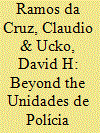

|
|
|
|
|
| Summary/Abstract |
Ten years ago, in 2008, the Brazilian Government adopted a strategy to regain control over the favelas in Rio de Janeiro – the Pacifying Police Units (UPP). In spite of initial favorable results, the main threat, namely the Red Command (CV), fought back and by 2014 the UPP strategy was badly frayed. In order to defeat this threat, it is necessary to reconceptualize CV as a criminal insurgency and to pinpoint and address the social and political factors that sustain it. This allows for a response inspired by the ‘shape-clear-hold-build’ counterinsurgency approach, which while cost-intensive is, in the long term, the most sustainable path to achieving security within the favelas and integrating these neglected areas within the broader city of Rio de Janeiro.
|
|
|
|
|
|
|
|
|
|
|
|
|
|
|
|
| 2 |
ID:
106609
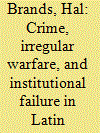

|
|
|
|
|
| Publication |
2011.
|
| Summary/Abstract |
This article examines the current crisis in Guatemala as a case study in the phenomenon of "criminal insurgency" in Latin America. Since the close of Guatemala's civil war in 1996, crime-especially violent crime-has increased dramatically, to the point that drug traffickers, organized crime syndicates, and youth gangs are effectively waging a form of irregular warfare against the state. The police, the judiciary, and entire local and departmental governments are rife with criminal infiltrators; murder statistics have surpassed civil-war levels in recent years; criminal operatives assassinate government officials and troublesome members of the political class; and chunks of territory are now effectively under the control of criminal groups. All this has led to growing civic disillusion and eroded the authority and legitimacy of the government. Rampant crime is causing a crisis of the democratic state.
|
|
|
|
|
|
|
|
|
|
|
|
|
|
|
|
| 3 |
ID:
185076
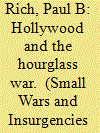

|
|
|
|
|
| Summary/Abstract |
This paper examines the cinema of the US-Mexican border in the context of an escalating drug war. It looks at movies released since the early 1980s and argues that Hollywood has supplied a large number of cinematic images of the ‘war on drugs’ that has more helped shape wider political and strategic debates. Using insights from strategic analysis, this paper seeks to show how cinema has represented the conflict between drug cartels, the Mexican state as well as various US security agencies such as the FBI, CIA, and DEA. The paper explores how these cinematic depictions straddle national boundaries and have evolved from being an extension of the western border genre in the 1980s into a more recent phase of action and war movies.
|
|
|
|
|
|
|
|
|
|
|
|
|
|
|
|
| 4 |
ID:
108344
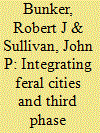

|
|
|
|
|
| Publication |
2011.
|
| Summary/Abstract |
This essay addresses and integrates 'feral cities' with 'third phase cartel' and 'third generation gangs' (3GEN Gangs) research. The feral cities diagnostic tool will be expanded from three levels (green, yellow, and red) to five (adding purple and black). This will be accomplished by means of the addition of two new levels that model the shift from ferality (de-institutionalization) to criminal re-institutionalization of urban social and political structures around new patterns of living. Such processes set the stage for the projected emergence of the BlackFor (Black Force) within the Americas. BlackFor represents a confederation of illicit non-state actors - essentially a postmodern form of societal cancer - linked together by means of a network of criminalized and criminal (narco) cities as are now arising.
|
|
|
|
|
|
|
|
|
|
|
|
|
|
|
|
| 5 |
ID:
108343
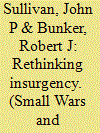

|
|
|
|
|
| Publication |
2011.
|
| Summary/Abstract |
Driven by globalization, Internet communications technology (ICT), and new economic forms the nature of states may be changing. Transnational criminal organizations (TCOs) - including what are commonly known as cartels - are early adopters to the new political/economic landscape. In addition to seeking to rule the illicit economy, criminal actors (networked cartels and gangs) are challenging states through high-order violence and leveraging nascent social/spiritual movements (narcocultura) to potentially usher in a new political dynamic. These violent non-state actors (criminal soldiers) are insurgent actors. They are waging new forms of insurgency - criminal and possibly spiritual - that have the potential to reconfigure states.
|
|
|
|
|
|
|
|
|
|
|
|
|
|
|
|